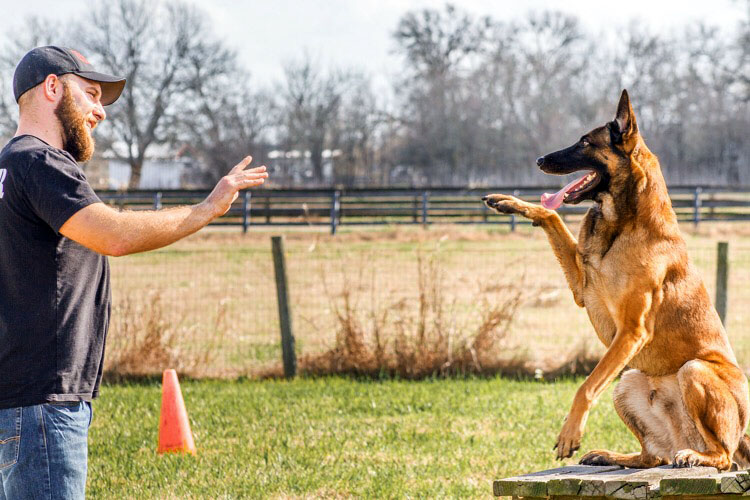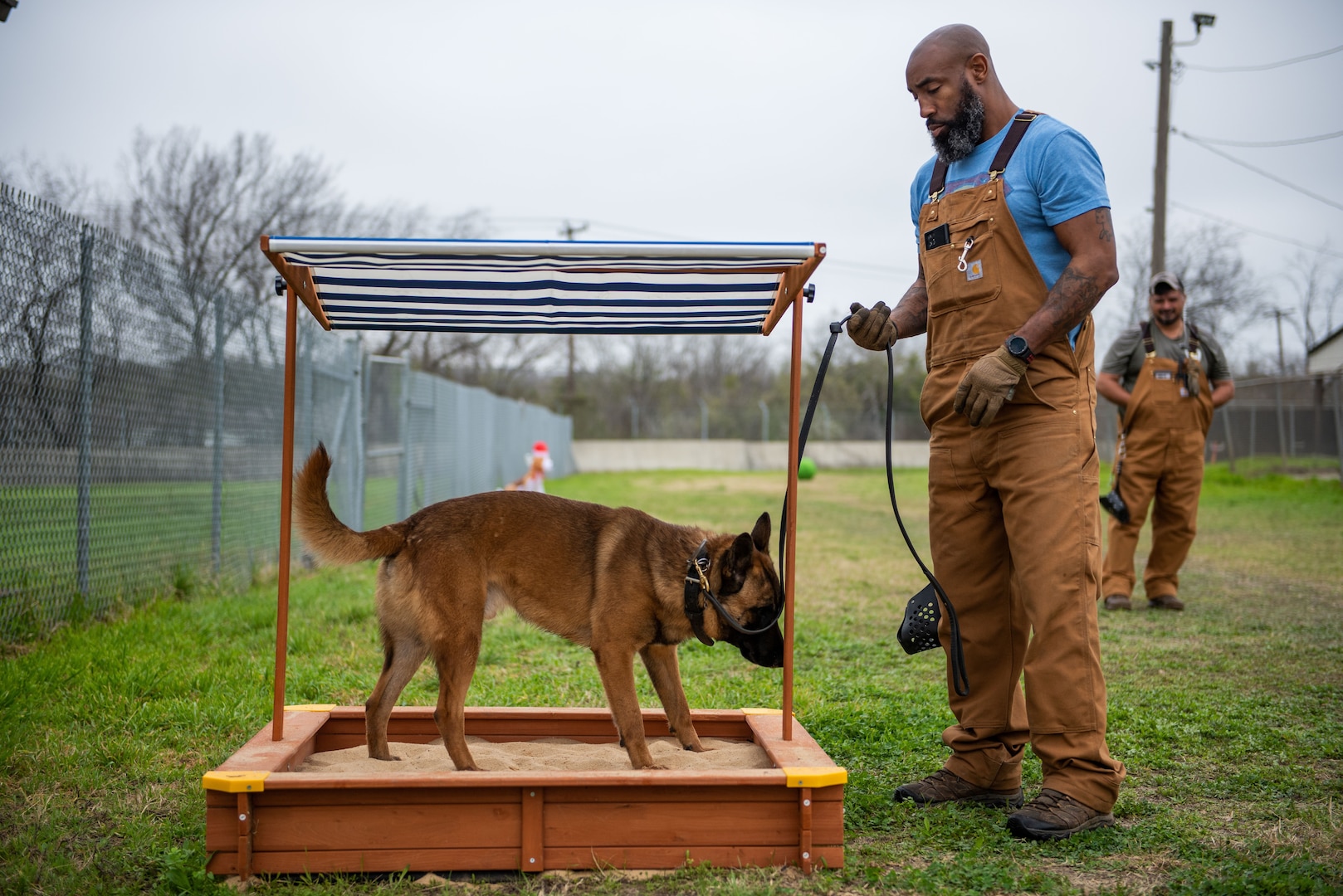Leading Dog Educating Techniques Every Proprietor Need To Know

Favorable Reinforcement Strategies
Using positive support techniques is crucial for reliable dog training, as it promotes a trusting bond in between the canine and the trainer. This method concentrates on rewarding preferable habits instead than punishing unwanted ones, creating an environment for discovering. Incentives can consist of deals with, appreciation, or play, which motivate dogs to duplicate the habits that make them these benefits.

Moreover, this strategy improves the pet's excitement for training sessions. When pets connect training with favorable experiences, they are a lot more engaged and responsive. Past immediate habits modification, positive support urges a collaborative relationship in between the pet dog and instructor, decreasing stress and anxiety and concern
To take full advantage of efficiency, it is vital to provide incentives promptly, making sure the canine links the habits with the reinforcement. Fundamentally, positive reinforcement strategies not just yield better-trained pet dogs however also promote a harmonious collaboration between pet and proprietor.
Remote Control Training Approach
The remote control training approach is a highly efficient technique that builds on the concepts of positive reinforcement by adding a distinct noise to mark desired behaviors. This technique uses a tiny handheld device that produces a clicking noise, permitting fitness instructors to communicate with their pet dogs in a clear and instant fashion. When a canine performs a behavior that the owner wishes to urge, the clicker is turned on, followed by a reward, commonly in the form of deals with or appreciation.
The trick to effective clicker training depends on uniformity and timing. It is important to click at the specific minute the wanted actions takes place, guaranteeing that the dog associates the noise with the action and the succeeding reward. This method not only improves interaction yet additionally cultivates a more powerful bond between the dog and the proprietor, as it motivates engagement and interaction throughout training sessions.
Remote control training can be related to a range of commands and behaviors, from basic obedience to much more intricate methods. Its versatility and efficiency make it a preferred strategy among professional fitness instructors and family pet owners alike, paving the means for a responsive and trained canine friend.
Leash Training Essentials
Efficient chain training is important for making certain a secure and delightful walking experience for both pet dogs and their proprietors. Dog training. Chain training need to start very early and be approached with patience and uniformity. Begin by choosing an ideal chain and collar or harness. A flat collar may next page benefit some pets, while others might benefit from a harness that lowers drawing.
Introduce your dog to the chain slowly, enabling them to explore it in a comfortable setting. Technique loose-leash walking once they are accustomed. This includes rewarding your pet for walking next to you instead of pulling in advance. Use deals with and appreciation to strengthen desired habits, and make sure to stay tranquil and assertive.
If your canine starts to draw, stop strolling instantly. In addition, technique numerous walking atmospheres to help your pet dog adapt to diversions.
Routine method will strengthen your pet's understanding of leash rules. Remember that chain training is a recurring procedure; persistence and uniformity will certainly generate the very best outcomes, cultivating a favorable experience for both you and your canine friend.
Socializing Methods
Socializing is an important element of dog training that must ideally start during puppyhood but can be advantageous at any type of age. Efficient socialization aids dogs establish confidence and minimizes the possibility of behavioral issues. To apply successful socializing strategies, reveal your dog to a range of environments, individuals, and like it other animals.
Begin with regulated settings, such as pup classes or arranged playgroups, where young pets can connect safely. Progressively present your canine to brand-new experiences, including different noises, surfaces, and tasks. Guarantee these experiences are positive and gratifying to establish a feeling of safety and security.
For adult pet dogs or those lacking exposure, begin with low-stress scenarios. Short, favorable communications with tranquil dogs and pleasant humans can develop favorable organizations. Use deals with and appreciation to enhance desirable behaviors during these experiences.

Consistency and Perseverance
Recognizing the significance of uniformity and patience in pet training is important for attaining enduring results. Training a pet is a steady process that needs an organized strategy and unwavering commitment from the proprietor. Each command or behavior need to be reinforced constantly to assist the canine comprehend what is anticipated of them. Irregular training can lead to complication, making it hard for the pet to grasp behaviors or commands, eventually preventing progression.
Dogs, like humans, find out at their very own rate. This promotes a trusting relationship between the canine and proprietor, motivating a more enthusiastic and willing student.
To cultivate consistency and persistence, develop a regular training routine, use the exact same commands, and make certain that all member of the family apply the exact same training concepts - Dog training. By official source doing so, you produce a stable atmosphere for finding out, enabling your pet dog to create and grow right into a mannerly buddy
Conclusion
To conclude, effective canine training strategies, such as favorable reinforcement, clicker training, and appropriate leash training, are necessary for promoting a healthy owner-dog partnership. Furthermore, applying socialization methods and maintaining consistency and patience throughout the training process adds significantly to a canine's general wellness. By integrating these approaches, pet dog proprietors can help with the development of well-adjusted, obedient pet dogs, ultimately improving the quality of life for both the pet dog and the owner.
Among the most prominent approaches are positive support, clicker training, and chain training, each offering special benefits that contribute to a well-behaved pet dog. As we check out these essential techniques, it ends up being obvious that understanding their subtleties can dramatically impact the training experience and the pet's general behavior.Making use of positive support techniques is important for effective pet dog training, as it fosters a relying on bond between the fitness instructor and the dog.In verdict, reliable dog training methods, such as positive reinforcement, remote control training, and proper chain training, are crucial for fostering a healthy and balanced owner-dog partnership. By incorporating these techniques, pet owners can facilitate the advancement of well-adjusted, loyal family pets, inevitably improving the high quality of life for both the canine and the owner.